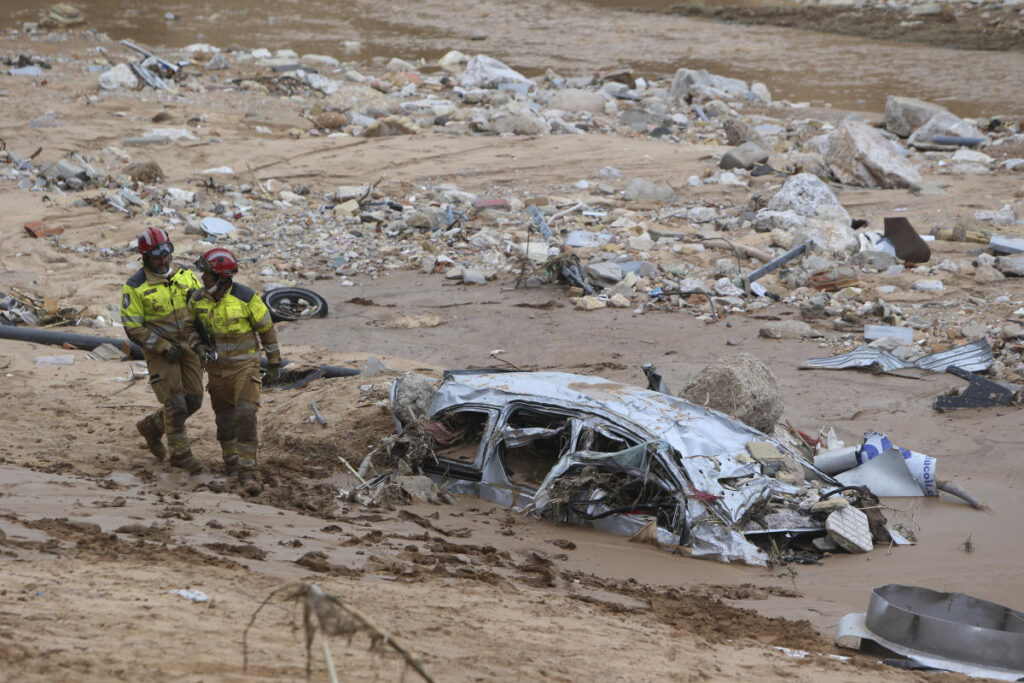In a dramatic and unsettling scene, King Felipe VI of Spain faced a crowd of angry and distraught residents during his visit to Paiporta, a town severely impacted by recent floods. Accompanied by government officials, the king attempted to console those affected by the devastating natural disaster that had claimed over 200 lives and left thousands homeless. The floods, characterized by torrents of water and mud, created a desperate situation in which victims expressed their frustration and grief towards their leaders, culminating in a heated confrontation. The insistent cries of “Get out! Get out!” and “Killers!” directed at the king signaled a breakdown of the usually carefully-crafted royal image, highlighting the growing discontent and desperation among the affected populace.
The situation escalated in Paiporta as survivors hurled mud and insults at the royal entourage, forcing law enforcement to intervene with mounted officers to contain the crowd. The emotional toll of the disaster was palpable, and as King Felipe VI sought to engage with residents, he appeared calm yet visibly affected by the distraught expressions of those he encountered. In a poignant moment, one individual was seen weeping on the king’s shoulder, showcasing the depth of sorrow experienced by the community. This visit was unprecedented for the Spanish monarchy, which has historically presented a polished and favorable image to the public. However, the calamity had stripped away the façade, revealing raw emotions and a pressing need for accountability from those in power.
Queen Letizia and the regional president of Valencia, Carlo Mazón, accompanied the king during this fraught visit. The presence of these figures was likely intended to demonstrate solidarity and support for the victims. Despite the efforts of the royal family and local officials to connect with the community, the overwhelming grief and anger manifested in the crowd underscored the failure of government and royal responses to adequately address the needs and concerns of those affected by such a catastrophic event. The high number of casualties, particularly the significant toll within Paiporta, intensified the scrutiny of leadership during a time when transparency and compassion were desperately needed.
In addition to the immediate aftermath of the floods, the long-term ramifications of this disaster are becoming increasingly apparent. As families sift through the wreckage of their homes and communities attempt to grapple with the loss of life and property, the role of government in disaster response is under intense examination. Survivors are likely seeking not only immediate aid but also systemic change to ensure that such tragedies are met with more effective and empathetic responses in the future. The emotional outpouring witnessed during the king’s visit may serve as a catalyst for a broader dialogue about accountability and governance, urging officials to listen more attentively to the needs of their constituents.
The devastation caused by the floods in Paiporta is a tragic reminder of the impending threats posed by climate change and the importance of resilient urban planning. As communities across Spain and other parts of the world face increasingly erratic weather patterns and natural disasters, it becomes vital for governments to prioritize infrastructure improvements and disaster preparedness measures. The tragic circumstances of the floods have raised awareness of these issues, pushing the need for proactive strategies that can mitigate the impact of future calamities and protect vulnerable populations.
In conclusion, the events in Paiporta reflect a significant moment in the relationship between the Spanish monarchy and the public, illuminating the disconnect that can occur during times of crisis. As survivors confront their heartbreak and anger, the royal visit serves as a poignant reminder of the responsibility that leaders bear to not only respond to immediate needs but also foster trust and resilience within their communities. The powerful emotions displayed by citizens highlight the necessity for more transparent and compassionate governance moving forward, signaling that the road to recovery will involve not just rebuilding homes, but also restoring faith in leadership amidst deep sorrow.

